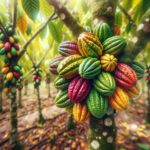Cacao Cultivation
Cacao (Theobroma cacao) is a crop of great economic and cultural importance, especially in tropical regions of Latin America, Africa, and Asia. Its cultivation requires specialized management to ensure the production of high-quality beans, which are essential for the production of chocolate and other derivative products. Below, we will explore the best practices for managing cacao cultivation, from land selection to harvest.
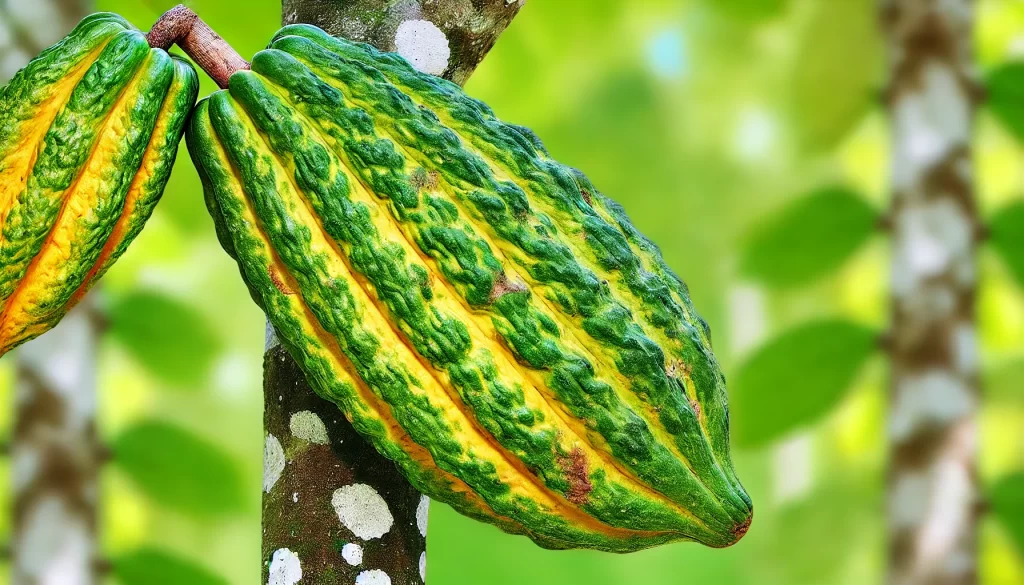
Selection of Land and Ideal Climate for Cacao
Climatic Requirements
Cacao is a tropical plant that thrives in warm and humid climates. The ideal temperatures range between 21°C and 32°C, with high relative humidity (70-100%). It is crucial that the crop receives an annual precipitation between 1,500 and 2,000 mm, evenly distributed throughout the year. Cacao does not tolerate prolonged droughts or temperatures below 15°C well.
Soil Selection
Cacao prefers deep, well-drained soils with good moisture retention. The optimal soil pH should be between 6.0 and 7.5. Sandy or clayey soils with good organic matter content are ideal. It is essential to avoid compacted soils or those with poor drainage, as they can cause root asphyxiation and limit plant growth.
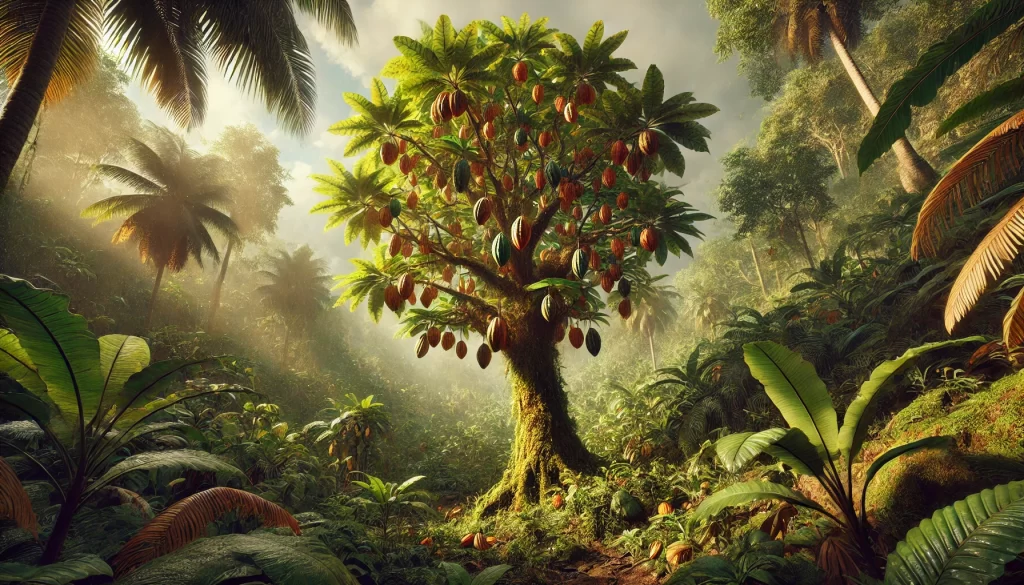
Soil Preparation and Planting
Soil Preparation
Soil preparation should begin with clearing the land to remove weeds and remnants of previous crops. It is recommended to conduct a soil analysis to adjust the base fertilization and improve the soil structure if necessary. The incorporation of organic matter, such as compost or well-decomposed manure, can improve water retention and fertility.
Cacao Planting
Cacao can be planted directly in the field or in nurseries to be later transplanted. Direct planting is done in holes 30 cm deep, while nursery seedlings should be 4 to 6 months old before being transplanted. The ideal spacing between plants is 3 x 3 meters, allowing for good canopy development and facilitating cultural practices.
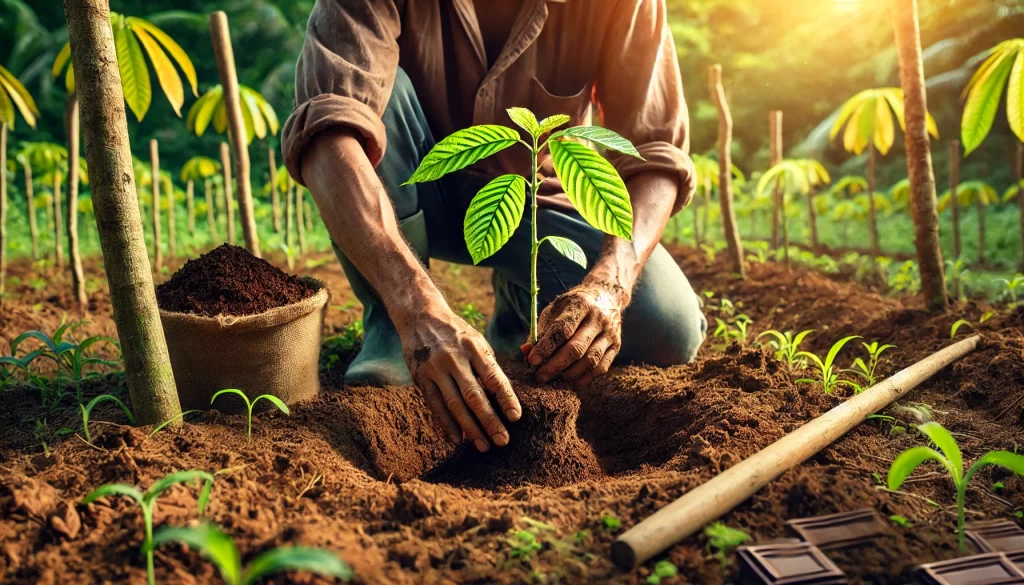
Cacao Nutrition and Fertilization
Nutritional Requirements
Cacao requires a balanced supply of nutrients for optimal growth. The main nutrients needed are nitrogen (N), phosphorus (P), and potassium (K), along with micronutrients such as calcium (Ca), magnesium (Mg), and zinc (Zn). Nitrogen is essential for vegetative growth, phosphorus for root development and flowering, and potassium for fruit formation and disease resistance.
Fertilization Strategies
- Base Fertilization: Apply compost or well-decomposed manure at planting. This improves soil structure and provides essential nutrients.
- Maintenance Fertilization: Apply NPK fertilizers during stages of rapid growth and fruit development. Fractional applications are recommended to avoid leaching and maximize nutrient uptake.
- Amendments and Micronutrients: If indicated by soil analysis, apply amendments to correct micronutrient deficiencies, such as zinc or magnesium, which are essential for photosynthesis and chlorophyll formation.
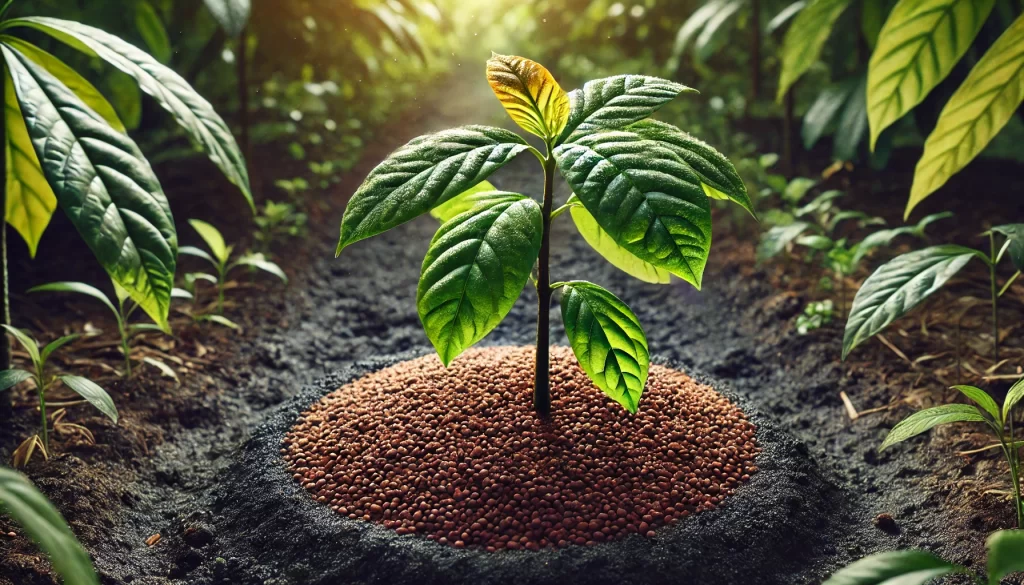
Pest and Disease Management
Common Pests in Cacao Cultivation
Cacao is susceptible to several pests that can affect both yield and the quality of the beans. Some of the most common pests include:
- Cocoa Pod Borer (Conopomorpha cramerella): This insect bores into the pods, causing premature drop and affecting bean quality.
- Cacao Thrips (Selenothrips rubrocinctus): Thrips suck the sap from the leaves, causing spots and deformities.
- Broad Mite (Polyphagotarsonemus latus): These mites feed on young leaves, causing them to curl and deform.
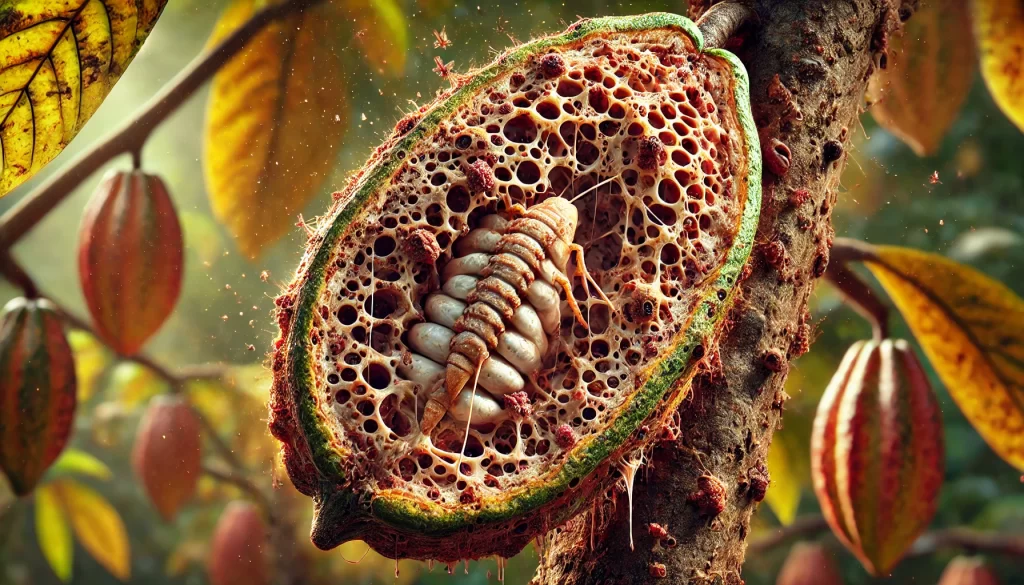
Common Diseases
Diseases in cacao cultivation can be devastating if not properly managed. The most common ones are:
- Frosty Pod Rot (Moniliophthora roreri): Causes pod rot, covering them with a white layer of spores.
- Witches’ Broom (Moniliophthora perniciosa): Causes the formation of deformed shoots, known as “witches’ brooms,” which significantly reduce production.
- Black Pod (Phytophthora spp.): Affects the pods, causing necrosis and rot, which reduces the quality of the cacao.
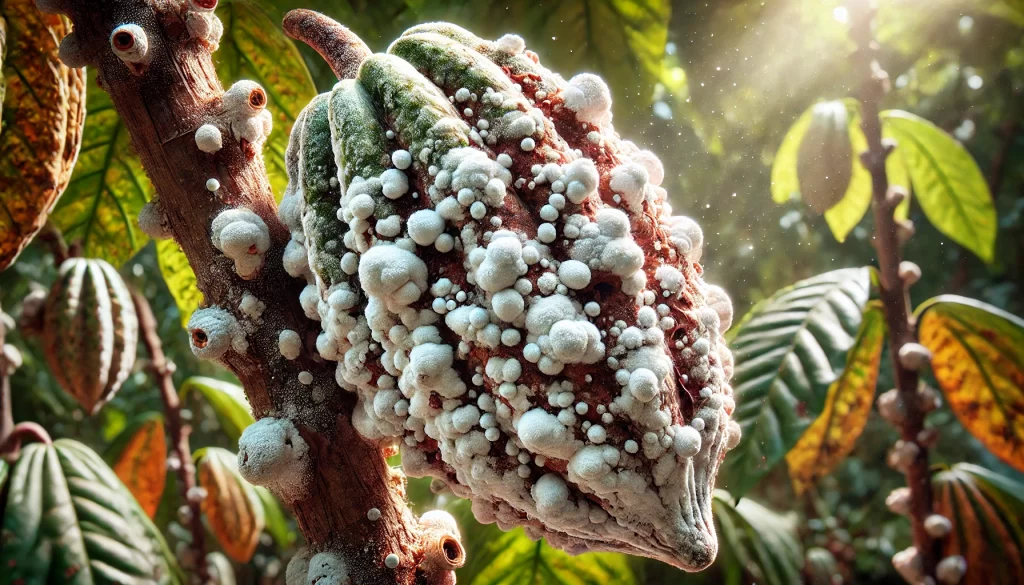
Management Strategies
- Regular Monitoring: Conduct periodic inspections to detect the presence of pests or symptoms of diseases early.
- Biological Control: Introduce natural enemies of pests, such as parasitoid wasps or natural predators.
- Chemical Control: Apply specific insecticides or fungicides when pests or diseases exceed the economic damage threshold, always following integrated pest management (IPM) recommendations.
Irrigation and Water Management
Cacao Water Requirements
Cacao requires a constant supply of water to maintain healthy growth and sustained production. Although it tolerates some degree of drought, prolonged water scarcity can reduce the size and quality of the fruits. Drip irrigation is an efficient technique that allows for adequate soil moisture without wasting water.

Irrigation Strategies
- Drip Irrigation: Maintains a constant water supply directly to the root zone, reducing evaporation and runoff losses.
- Mulching: Apply a layer of organic matter around the base of the plants to conserve soil moisture and reduce weed growth.
- Soil Moisture Monitoring: Use tensiometers or moisture sensors to determine when watering is necessary and avoid over-irrigation.
Harvest and Post-Harvest Management
Maturity Indicators
Cacao is harvested when the pods change color, from green to yellow or red, depending on the variety. It is important to harvest at the optimal time to avoid over-ripening, which can affect the quality of the beans.
Harvesting Techniques
Cacao is harvested manually, using tools such as machetes or pruning shears to cut the pods without damaging the plant’s branches. It is crucial to handle the pods carefully to avoid bruising or damage that could affect subsequent fermentation and drying.

Post-Harvest Processing
- Fermentation: A key step in developing the precursors of cacao flavor. It is done in wooden boxes for 5 to 7 days.
- Drying: After fermentation, the beans are dried in the sun or mechanical dryers until they reach a moisture content of 7%.
- Storage: The dry beans are stored in controlled temperature and humidity conditions to prevent mold growth and preserve quality.
 AgronoBlog – Agriculture Blog
AgronoBlog – Agriculture Blog 